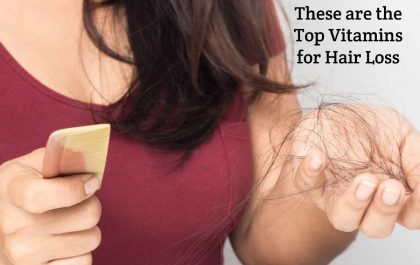Skin Conditions are your body’s largest organ. It covers and protects your body. Hundreds of skin conditions can affect us. The most common can cause similar suggestions, so learning what distinctions to look for can be essential.
Skin conditions donate 1.79%Trusted Source of the global load of sickness universal. And the American School of Dermatology Connotation reports that 1 in 4 people in the United States has a skin disease.
While learning to tell one condition from extra can help a person deliver home-based care. It can be crucial to receive an analysis and treatment from a health care professional, such as a dermatologist.
Below are some mutual skin conditions, organized by how long they last, when they develop, and which areas they affect. When possible, we also describe how these circumstances appear in the skin of different tones.
Table of Contents
Common Skin Diseases and Conditions
- Your skin
- Holds body fluids in, preventing dehydration
- It keeps harmful microbes out, stopping infections
- It helps you feel belongings like heat, cold, and discomfort
- It preserves your figure temperature even
- It types vitamin D when the sun shines on it
Whatever irritates, clogs, or aggravates your skin can cause signs such as soreness, swelling, burning, and itching. In addition, allergies, irritants, heritable makeup, certain diseases, and immune system problems can cause rashes, hives, and extra skin situations. Many skin difficulties, such as acne, also move your appearance.
Adult Skin Condition
Don’t have time for intensive skincare? You can still pamper yourself by maxing the basics. Good skincare and healthy lifestyle selections can help prevent natural aging and various skin problems. So get started with these five no-nonsense tips.
One of the most important ways to protect your skin is to protect it after the sun. A lifetime of sun exposure can cause wrinkles, age spots, and other skin problems and increase the risk of skin cancer.
For Complete Sun Defense
Use sunscreen. Use a broad-spectrum sunscreen with an SPF of at most minuscule 15. Apply sunscreen, and reapply every two hours — or more often if you’re spinning or sweltering.
Seek shade. Avoid the sun between 10 a.m. and 4 p.m., once the sun’s rays are harshest.
Wear caring clothing. Cover your skin with tightly laced long-sleeved shirts, long pants, and wide-brimmed hats. Also, reflect laundry extracts give the dress an extra layer of electromagnetic defense for a certain number of washings or unique sun-protective clothing that blocks ultraviolet rays.
Smoking makes your skin look older and backs to wrinkles. This is because you are burning contracts the tiny blood vessels in the outermost layers of skin, decreasing blood flow and creating skin softer. Unfortunately, this, too, depletes the skin of oxygen and nutrients necessary for skin well-being.
Smoking also compensations for collagen and elastin — the fibers that stretch your skin asset and resistance. In addition, the repetitive facial expressions you make when smoking — such as embracing your lips when inhaling and squinting your eyes to keep out smoke — can donate to wrinkles.
The best way to defend your skin is to quit if you burn. In addition, smoking increases your risk of squamous cell skin cancer. Ask your doctor for tips or actions to help you stop smoking.
Daily purgative and shaving can take a toll on your skin. To keep it gentle:
Limit bath time. Limit your bath or bath time, and use warm — rather than hot — water. Hot water and long showers or baths remove oils from your skin.
Avoid strong soaps. Strong soaps and antiseptics can strip oil from your skin. In its place, choose mild cleansers.
Shave carefully. Shave in the direction the hair harvests, not against it. For the nearby shave, use a clean, sharp razor. To protect and oil your skin, apply flake cream, lotion, or gel before flaking.
Pat dry. After laundry or dropping, temperately pat or blot your skin dry with a towel so that some moisture remainders on your skin.
Moisturize dry skin. Use a balm that fits your skin type if your skin is dry. For daily use, reflect a cream that contains SPF.
A healthy diet can help you express and feel your greatest. Eat sufficiently fruits, vegetables, whole grains, and lean proteins. In addition, consuming plenty of water helps keep your skin hydrated. The proposition between diet and acne isn’t clear — but some explore propose that food rich in fish oil or fish oil accessories and low in unnatural kinds of butter and processed or refined carbohydrates might reassure younger-looking skin.
Unrestrained stress can make your skin more sensitive and trigger acne and other skin problems. The results might be extra histrionic than you expect. To encourage healthy skin — and a good state of mind — take ladders to attain your burden. Get enough sleep, set reasonable restrictions, scale spinal your to-do list, and brand time to do the clothes you enjoy.
All About Common Skin Condition Disorders
Skin disorders vary greatly in suggestions and bleakness. They can be brief or permanent and may be painless or painful. Approximately skin conditions are minor, and others can be dangerous. Some have situational reasons, though others may be genetic.
While most skin sicknesses are minor, others indicate a more thoughtful issue. Contact your registrar if you think you might have one of these joint skin difficulties.
Pictures of different skin disorders
There are Many Different Types of Skin Criticism. Here is a list
Warning: graphic images ahead.
Acne: Usually located on the face, neck, shoulders, chest, and more excellent back
Breakouts on the skin are blackheads, pimples, pimples, deep, sore cysts, and knobs. It May leave scars or blacken the skin if raw
Acne, the most common skin protest in the U.S., can be a basis of nervousness for every teen. Plus, the incidence of acne is mounting in adults, too.
Acne by blocked hair glands and oil (sebaceous) glands of the skin, often triggered by hormonal changes. Acne mentions reactions on the face and blackheads, cysts, and nodules. In addition, some people get acne on other parts of their bodies, such as the back and chest.
Acne action by a dermatologist is essential because acne left unchecked can often lead to permanent scars and dark facial spots for more moderate or severe acne.
Adapalene topical (Differing) cream is now accessible over-the-counter deprived of a medicine.
Tretinoin topical is also obtainable in creams, gels, and lotions. Discuss this medicine with your doctor: tretinoin should not be used during pregnancy except needed, and the benefit offsets the risk to the fetus.
In simple acne cases, oral isotretinoin may come with thoughtful pregnancy warnings. In addition, there is a very high risk of congenital disabilities if pregnancy occurs while taking this drug. Therefore, this drug should not happen to female patients who may become pregnant.
Cold sore
Red, painful, fluid-filled swelling that expressions near the mouth and mouths
The artificial area will often tingle or burn previously the pain is visible
Rashes may occur all by mild, flu-like symptoms such as low fever, body aches, and inflamed lymph nodes
. Atopic dermatitis (Eczema)
Atopic dermatitis is one of the children’s most common forms of eczema. The careful cause of atopic dermatitis is unknown, but detectives believe it may involve genetics, the environment, and the resistant organization.
Atopic dermatitis can seem on the face (especially in infants), hands, feet, or in the crinkles and wrinkles of the skin. Dry, cracking, and itchy skin is the norm, and constant itching may lead to a set area. While eczema often happens in allergies, allergies do not cause eczema—topical steroids reduce indicators.
Dupixent
In March 2017, the FDA emptied Regeneron’s Dupixent injection for patients with moderate-to-severe eczema who cannot use or have ineffective up-to-date treatment.
Scientific trials of Dupixent in over 2,100 grownups with moderate-to-severe atopic dermatitis led to durable or approximately clear skin associated with placebo, with a reduction in itching, after 16 weeks of therapy.
Dupixent is also approved for use in pediatric patients 6 to 17 years of age and is obtainable in a prefilled syringe for more convenient self-administration.
Dupixent can work with or deprived of topical corticosteroids.
Conclusion
Some skin situations are harmless, while others can cause distress and distress, among other symptoms. It is important to recall that no one has to deal with their skin subjects alone. Teaming up with a registrar, such as a dermatologist, can assistance ensure a detailed analysis of the best possible treatment plan.
Also Read: What is Facial care? – Importance, Methods, Benefits, And More
Related posts
Featured Posts
How to Make Coconut Oil for Hair? – Knows, Benefits, Risks, And More
Coconut Oil for Hair – Need to Know About Using Coconut Oil for Your Hair coconut oil for hair may…
These are the Top Vitamins for Hair Loss
These are the Top Vitamins for Hair Loss – Vitamins play a vital role in the functioning of the body….


